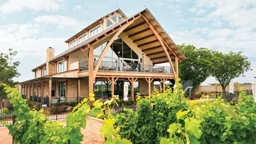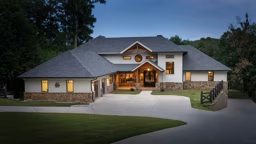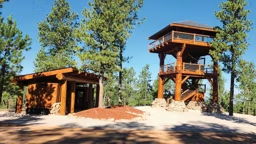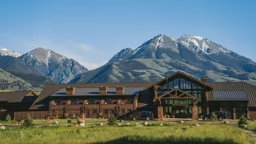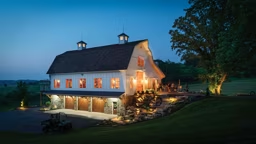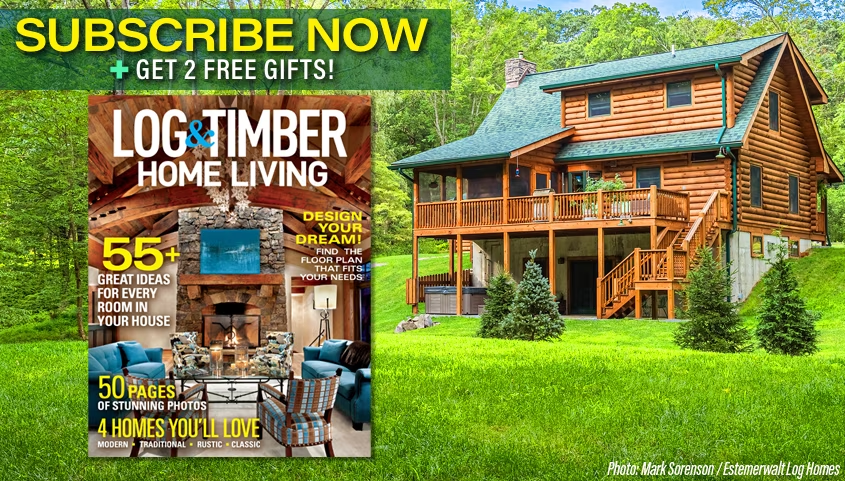The Arts & Crafts architect Henry Greene, who designed most of the famous bungalows in Southern California, led us through two great home-building adventures and gave us the guiding principle for both projects: “Eliminate everything that is unnecessary, and make it as direct and simple as possible, but always with the beautiful in mind as the first goal.”
We began our first adventure in South Pasadena, California, where we spent four years restoring a 1912 bungalow home that contained wonderful examples of the Arts & Crafts style of architecture and woodworking.
After 30 years of living in the Los Angeles area, the large-city lifestyle was getting to be more of a bother than it was worth. My wife Mary and I are avid fly fishermen. During our many trips to Colorado, our thoughts shifted to giving up the city life and moving to the country.
After extensive homework we bought 35 acres of picturesque vacant land surrounded by breathtaking views, sold our California house, packed our belongings and moved to Colorado. The difference between restoring a house in the city and building in the country can be daunting. In the end, Mary and I spent the better part of four years building a two-story, timber-frame home along with a fully operational workshop and three-car garage with an attached media room. We built everything in the three buildings from scratch except the windows.
We built the cabinets, the leaded-glass windows, the doors, the walls and the hand-pegged floors. We designed and built the driveway, the fences, the streambeds and the landscaping around the house. Tradesmen were used only for the major electrical and plumbing work. We also hired out the water well drilling, the cement stem walls and pads along with the major dirt work.
We did all of the interior design, color selection, and woodworking ourselves, with the great minds of the Arts & Crafts movement as our guides. Charles and Henry Greene, along with Gustav Stickley and many of the architects and builders who practiced their trades in the early 1900s. We freely interpreted their work to fit our own personal likes and dislikes. Frank Lloyd Wright window designs can be found throughout our house.
To build the house we had to live on the site, so we purchased a travel trailer and towed it up to our empty land. We then started our search for a supplier of timber-frame building materials.
Almost from the beginning we knew that we were going to be the builders. This was a much bigger decision than we realized at the time. In the days to come, we often questioned the decision. But now as we look back at the entire project, we are both convinced that the decision was correct. “We did it ourselves” has a sweet ring to it.
Our search for timber frame material suppliers was narrowed to only those companies that provided a wide selection of services known as “one-stop shop.” All of our requirements were met at Riverbend Timber Framing, which went out of its way to make sure that we were happy and satisfied. Then we began phase one of construction.
We can still remember that wonderful feeling when that first truck carrying the timbers appeared on the road at the bottom of our hill. Three trucks later, we asked ourselves: Where did all those pieces fit into the house puzzle and how are those giant oak beams going to stand up in the air and support the walls and floors?
The Riverbend representative took control, and in a short time the beams went one place in a certain order and the panels were stashed somewhere else, also in a certain order.
The next day we reviewed the plans and before we knew it, the first bent was lifted into place by the Riverbend crane. For the next four days we were amazed how fast and smooth everything went. At the end of the five days, the entire frame was raised, and two of the exterior walls were up and secured. At this point the Riverbend advisor and all of our friends returned to their other lives.
The sixth day was a memorable one. We woke at 6 a.m. By 6:30, we realized that it was now up to us to complete the house. We were looking at wooden beams sticking in the air, some panels attached and a lot of materials still sitting on the ground. The whole structure resembled the framework of a giant cathedral. We looked at each other with terror in our eyes. We had both done a lot of things in our lives, but nothing even came close to what we were looking at right then. After a few more cups of coffee and some advice from our neighbors who had gone through a similar experience, we started on what was to be the journey of a lifetime.
Phase two was the installation of heating, plumbing, electrical and gypsum-board walls—most difficult to easiest in that order. In phase three we selected colors, which turned out to be easy for us because we used the Arts & Crafts palate of colors and in the end stuck pretty much to what had been in our previous home.
Phase four — cabinets and floors — lasted almost a year, so it was not only the most time-intensive but also the most expensive. We built the cabinets onsite using maple and cherry, with a Greene-and-Greene inspired cloud lift pattern on the bottom rails. The upper-cabinet doors included leaded-glass panels made by Mary in a Frank Lloyd Wright-inspired design.
Floors were four-inch oak planks with walnut trim. We decided to build a staircase based on designs in two famous Greene-and-Greene homes in Pasadena, and used another Greene-and-Greene home, the Thorsen House, as the design for our front door, which includes stained glasswork by Mary.
The distinctions for our construction phases began to blur at this point. During summers we did exterior work. In the snowy Colorado winters we worked inside.
The last, and most difficult, phase was the interior trim. Using Arts & Crafts style as our guide, we installed six-inch baseboards, and four- and five-inch window casings made of white oak and maple. It took many months and hundreds of board feet of lumber. Just as with the classic bungalows of the early 20th century, our trim work pointed the way to completing the project, and was meant to bring the outside in.
Charles Greene said that an Arts & Crafts home should “fit in” its environment, yet reveal its elements gradually. “Good things are not always seen at once, but they do not need advertising when they are found.”
When the sun drops behind our hill at the end of the day, when all of the birds and wildlife settle down for the night and the wind is still, we sit on our front porch and wonder where our journey will take us next, now that our house is completed.
Home Details
Square footage: 3,237
Designer/Builder: Riverbend Timber Framing



















